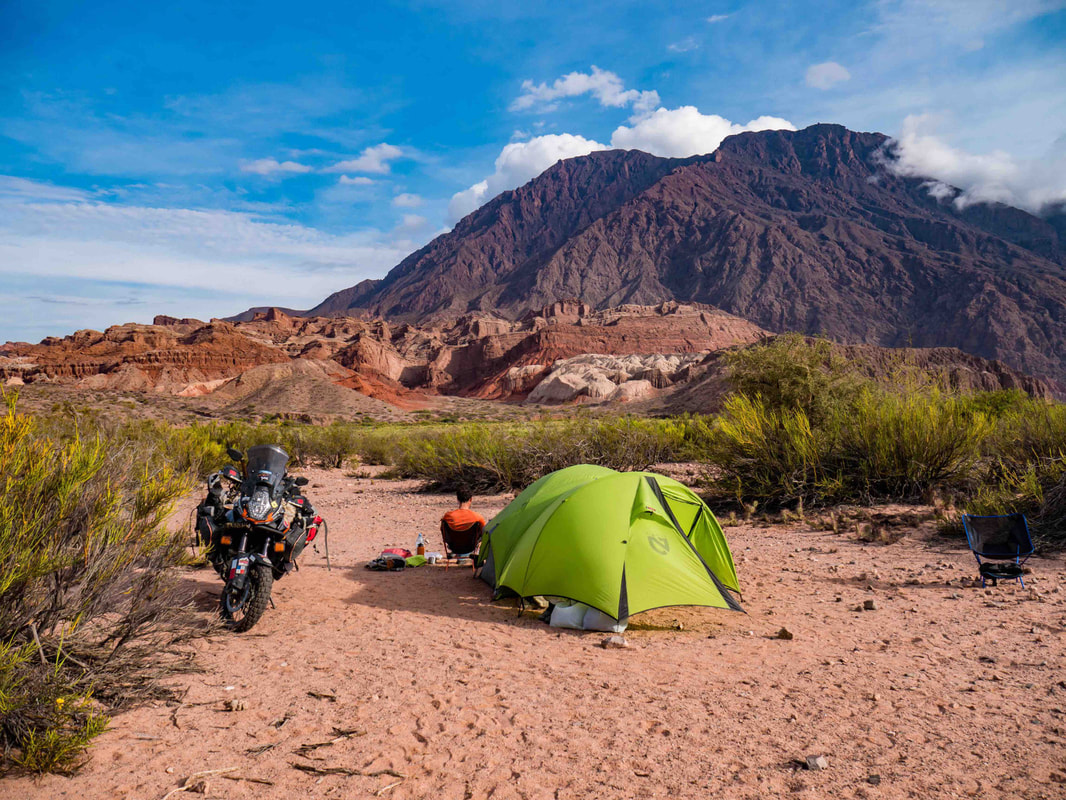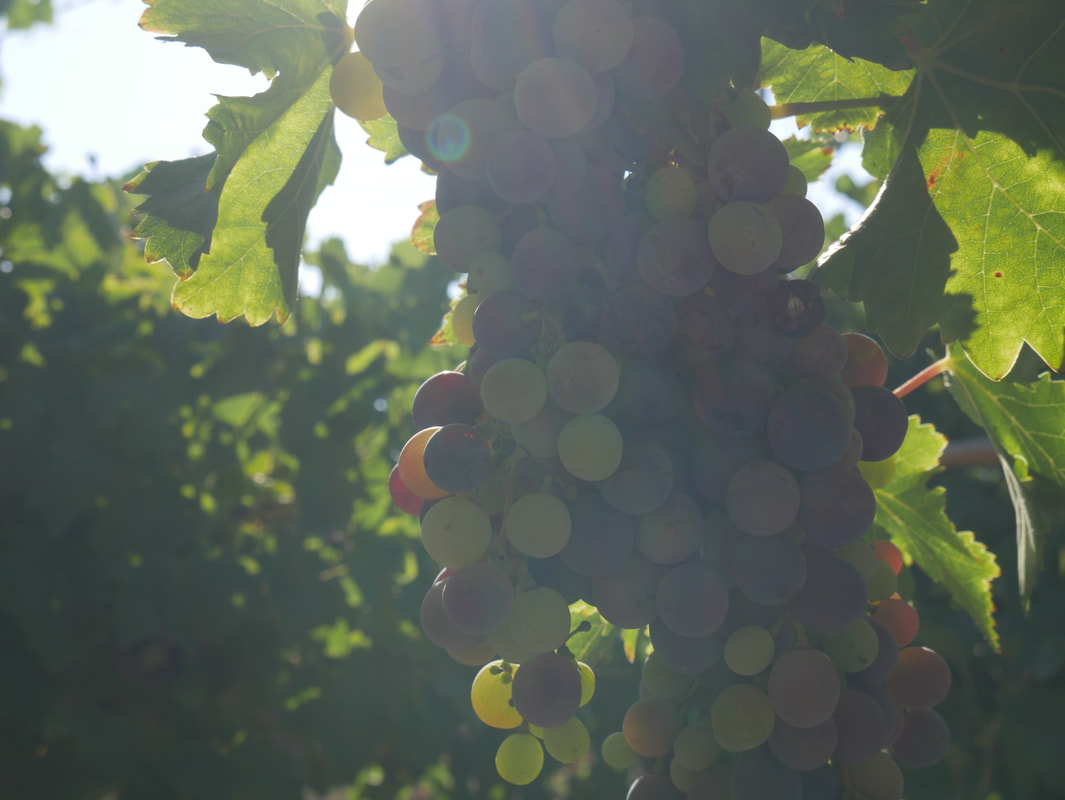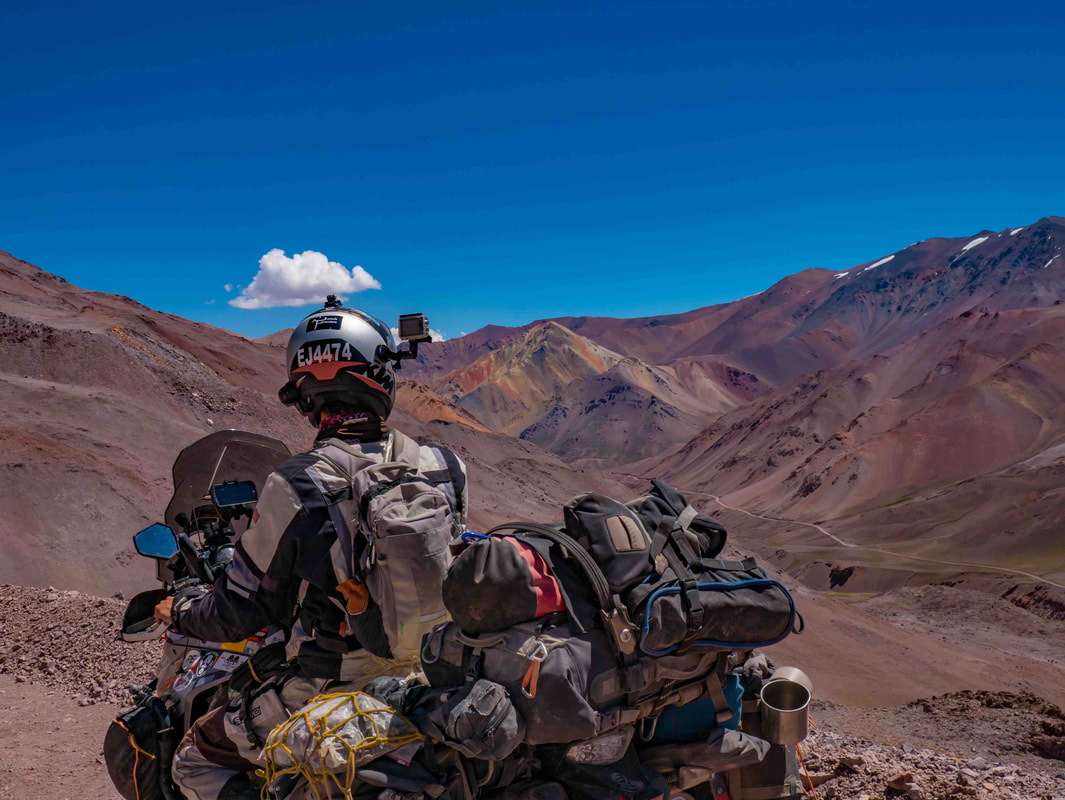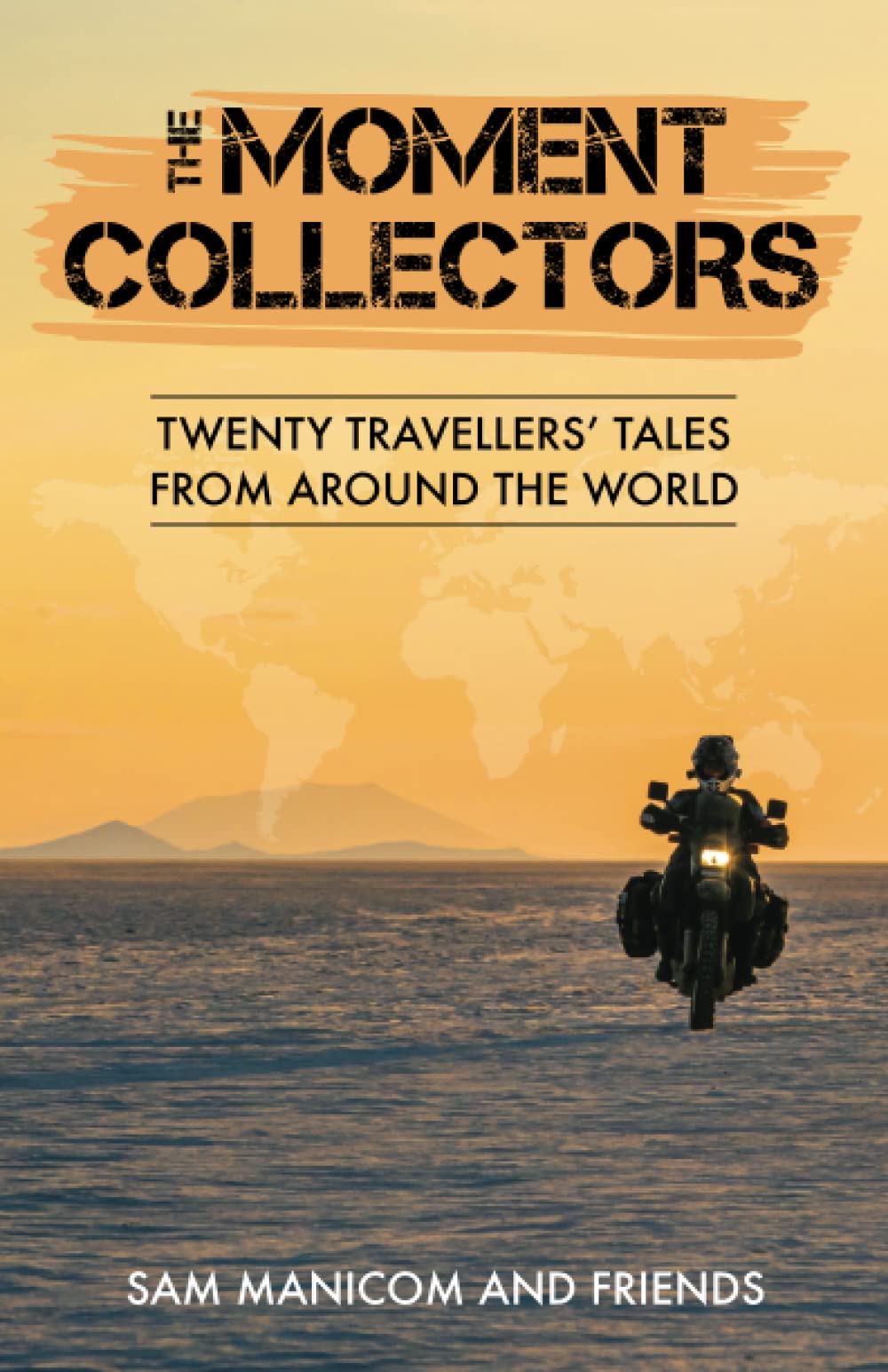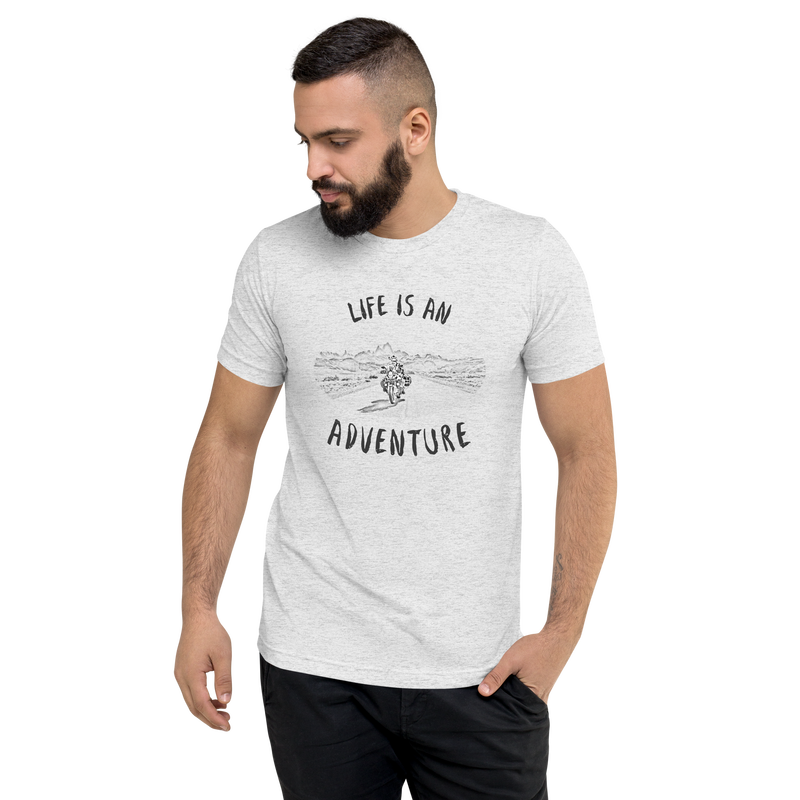By MarisaWe were in northern Argentina, spending our days poolside in the shade of peach trees and vineyards, when we realized that it had to come to an end. Because if we were ever going to get to Patagonia's glaciers before the roads became impassable with snow, we would need to exchange this warm-weather grape-eating lifestyle for one of down jackets and wooly hats. And it had to be soon, before we'd miss our window of opportunity to get to the Antarctic regions of South America while it's still summer there. So we made a plan to head south, south, and more south, maybe stopping along the way in Chile's capital, Santiago, maybe not if we felt rushed. But that was all before the problems with the bike started (yes, that's right, more problems, but nothing as serious as the ones after the salt flats). We left Jujuy, Argentina, and headed into the thick of the lush green Amazonian highlands to get to the region's largest city, Salta. And by a pure wonderful accident, we took a road that is now one of my favorites of all time: Route 9. They had signs at the beginning warning us that this was going to be “sinuoso", which meant it had lots of curves, but I think that's an understatement. It was narrow, perfectly-paved, and a twisting roller-coaster ride that wound along the fertile mountainsides like we were gliding through Jurassic Park. The scenery reminded me of the wild and overgrown Death Road in Bolivia, but on speed since it was paved and fast. There were so many vines hanging over the way, we even got hit by them. As the road danced through the rich farmlands and cut into the steamy rainforest, it was hot, it was thrilling, and it was not for those who get car-sick! Despite being sweaty and sweltering in our jackets, Tim and I were all smiles throughout. Salta turned out to be a lovely colonial white-washed city that feels as tropical, humid, friendly, and laid-back as a Caribbean island. It's also where we had our first real Argentinian steak: and slab of perfectly-spiced meat that was so good, even just writing about it makes my mouth water. From there, we headed towards what we'd heard was a beautiful mountain pass into Chile, a border crossing called Agua Negra, but of course we took the scenic way to get there. Route 68 from Salta to Cafayate was another of Argentina's pristinely-paved roads, but this time it brought us through a red canyon of colorful spires and cliffs that was not too unlike what you'd find in Arizona, or Canyonlands National Park, Utah. Wiley Coyote or James Earp would have been right at home in this cactus-filled desert of reds, pinks, and oranges. We even camped in the middle of it along the tiny river that created these awe-inspiring stone-scapes over thousands of years. It was just us, the parrots, a fox, and the sparse spiky plants out there in the wilds of Argentina. We reached Cafayate the next morning to find that they had somehow transformed this rugged desert landscape into a Tuscan haven of spring-green vineyards with huge plantation-like winery hotels leading into the cute and quaint center of town. From what I heard, Cafayate is home to a population of Germans who emigrated after WWII (as in many placed in Argentina). But here they not only make world-class wines, but also brew some of the best beers in South America. We hit the causeway of Argentina's Route 40 and went south toward the mountain pass to Chile, flying as fast as we could through the sweltering heat, sliding through one canyon after the next. I could have seriously cooked an egg on my helmet if it weren't so round. It's a black helmet, and I'm not sure why Schuberth thought it the best color for wearing on your head as you make your way around the world in the scorching sun. But that's the way it is, and no amount of venting could prevent my brain from cooking in my skull. I couldn't even speak Spanish properly by the end of the day. At last we arrived at the pass over the Andes mountains that would take us into Chile, and we were excited for some cool breezes and possibly some snow. I would have gladly jumped into snow at that moment, and considering I hate the cold, that's a huge statement. This is also where our bike problems started. We'd get on the bike, ready to go, Tim would press the ignition switch, and then nothing would happen. The engine wouldn't turn, the lights wouldn't come on... nothing. Usually by the second try things would be back to normal, but it was disconcerting. Then as we were winding our way up the pass's switchbacks which were dirt and a little corrugated, the bike started overheating. It's done this a lot ever since Peru, and we've changed the coolant, but this time the coolant was literally boiling inside the engine. You could hear the bubbles raging and coolant was spewing out the overflow hose like it was throwing up. And it wasn't even that hot out, certainly nothing like what we had just been through in the lower regions of Argentina. Again, disconcerting, especially since we wanted to head out into the wilderness of Patagonia next where if something went wrong, we'd really be stranded. The pass was lovely, with its stones and hills carved by the wind, and it had two tropically-colored turquoise lakes, one called Las Islas Griegas (The Greek Islands), and the other simply called La Laguna (The Lagoon, easy to remember I suppose). And there was snow on the pass, which I did not jump into, because a cloud of worry had begun to loom over us about the bike. So we decided to go to the KTM dealership in Santiago as soon as we could. After all, it was going to be the last outpost with professionals who could look at it before Patagonia. The cloud of stress became thicker as we went through Chilean customs. I knew from the last time that I wasn't allowed to bring any fruit over, so I'd eaten all my fresh Argentinian peaches before getting there. But as they strip searched our luggage like we were criminals, they found an onion, garlic, our tomatoes, and some chicken which I was saving for dinner that night, and took it all. I know that tomatoes are technically fruits, but the onion! We'd planned on camping that night near the pass, and I had bought the chicken and tomatoes as a surprise for Tim, something better than the usual pasta with watery powder cheese sauce. I now know it's illegal to bring any perishable foods over, not just fruits, and I was in the wrong, but at that moment, I was really upset. So to all overlanders: beware of crossing into Chile! I think it's all a ploy to force you into buying their overpriced not-so-delicious Chilean food. So we arrived in Chile, the sun was setting, and we were without anything for dinner. After a hard day of riding, this was not how we wanted to end up. So we rode all the way to Vicuña, a cute tourist town in the Elqui valley famous for producing pisco brandy and Chilean wines. We spent nearly $20 on four empanadas, and found a hotel to stay at since camping in the area was nearly the same price. Everything in Chile is expensive, and you usually get very little for your money (I promised Tim I would not complain again about the sandwich I bought yesterday, but here goes: plain white bread and boiled gristly chicken with mayo globbed on top which cost $8!). But this boutique hotel turned out to be an oasis (Hotel Aldea del Elqui). Breakfast (included) was a huge buffet of croissants, fruits, cheeses, breads, and scrambled eggs. There was a pool, jacuzzi, gardens with fountains, and the place wasn't breaking the bank. So we decided to rest there for a day to recuperate and make a plan of how to get to Santiago. The Elqui Valley is also the world's first designated International Dark Sky Sanctuary, meaning visibility of the stars is high due to lack of moisture and light pollution. Plus, it was almost the new moon, and since Tim and I love the cosmos, we knew we couldn't leave the region without a tour of an observatory. So we took the dirt road through the cactus-covered hills to Combarbalá, and got tickets to the Cruz del Sur Observatory that night, which was actually built in the shape of the southern cross. The bike was still not always starting the first time, but we never had problems the second time, so our confidence was high that we could get to Santiago no problem. That night the skies were twinkling and magical. I learned three ways to find polar south using the Southern Cross, how the ancients used the stars as a calendar, and I can now point out Taurus, Gemini, Leo, Cancer, the False Cross, Subaru a.k.a. Pleiades (yes, the Japanese car company, and their logo is the constellation), two other galaxies outside of the Milky Way, and we got to look through the big telescope at nebulas and the brightest star in the sky, Sirius A. It was an experience of a lifetime. If you like the night sky, and even if you've never really seen a constellation in your life, if you come to Chile, this is a must do. There are tons of observatories in the Elqui region, but even just a night of staring at the stars without a guide is impressive enough to make you feel breathtakingly insignificant compared to the vastness of the universe. Yesterday we took Chile's massive coastal highway down to Santiago, and through the mist and wind, we watched the waves of the Pacific crash onto the sharp and jagged coast. Now we're in the sparkling metropolitan city of Santiago, full of glass high rises, LA-like criss-crossing highways, and even some snowy mountain peaks in the distance. The bike is at KTM, and I'm feeling very confident that our starting and overheating problems will be resolved quickly (knock on wood), especially considering Tim showed the guys a bolt he'd found and didn't know where it came from, and the mechanic knew right away from where it had fallen. He passed the test! Once the bike is as good as new (ok, that may not happen, but good enough to get us through Patagonia), we'll go into the real southern reaches of Chile, and take the Austral highway down into the land of glaciers, mountains, and ice. As always, you can see our latest pictures and stories on facebook and instagram. Support the Journey on Patreon! |
Follow UsRide with us from Chicago to Panama!
2Up and Overloaded Get inspired by the tale that started it all:
Maiden Voyage 20 author's tales of exploring the world!
The Moment Collectors Help us get 40 miles further down the road with a gallon of gas!
Become a Patron for early access to our YouTube Videos!
Subscribe to our YouTube Channel!
Subscribe to our Blog by Email
|
2Up and Overloaded
Join our clan of like-minded adventurers...
Proudly powered by Weebly
Designed by Marisa Notier




